What are New World Tarantulas
New World tarantulas are a fascinating group of spiders, captivating enthusiasts and pet owners alike. These arachnids, native to the Americas, are known for their impressive size, diverse coloration, and relatively docile nature, making them popular choices for those interested in keeping exotic pets. Their life cycle, from tiny spiderlings to magnificent adults, is a spectacle of nature’s wonders. This article delves into the world of New World tarantulas, exploring their origins, key characteristics, fascinating facts, and how to care for them, ensuring a thriving experience for both the spider and the owner. Understanding these creatures is essential for appreciating their beauty and respecting their needs.
Origin and Habitat
New World tarantulas hail from the Americas, spanning a vast range from the southern United States down to South America. Their habitats are as diverse as their appearance, with species thriving in tropical rainforests, arid deserts, and even grasslands. The varied environmental conditions of their native habitats have shaped their unique adaptations and behaviors. They are typically terrestrial or burrowing spiders, creating homes in the ground or under rocks, logs, and other natural shelters. Some species are arboreal, living in trees or shrubs. The geographical distribution of these spiders is a key factor in understanding the specific care requirements of each species, as their needs often reflect the environmental conditions of their natural habitat.
Distinguishing Features
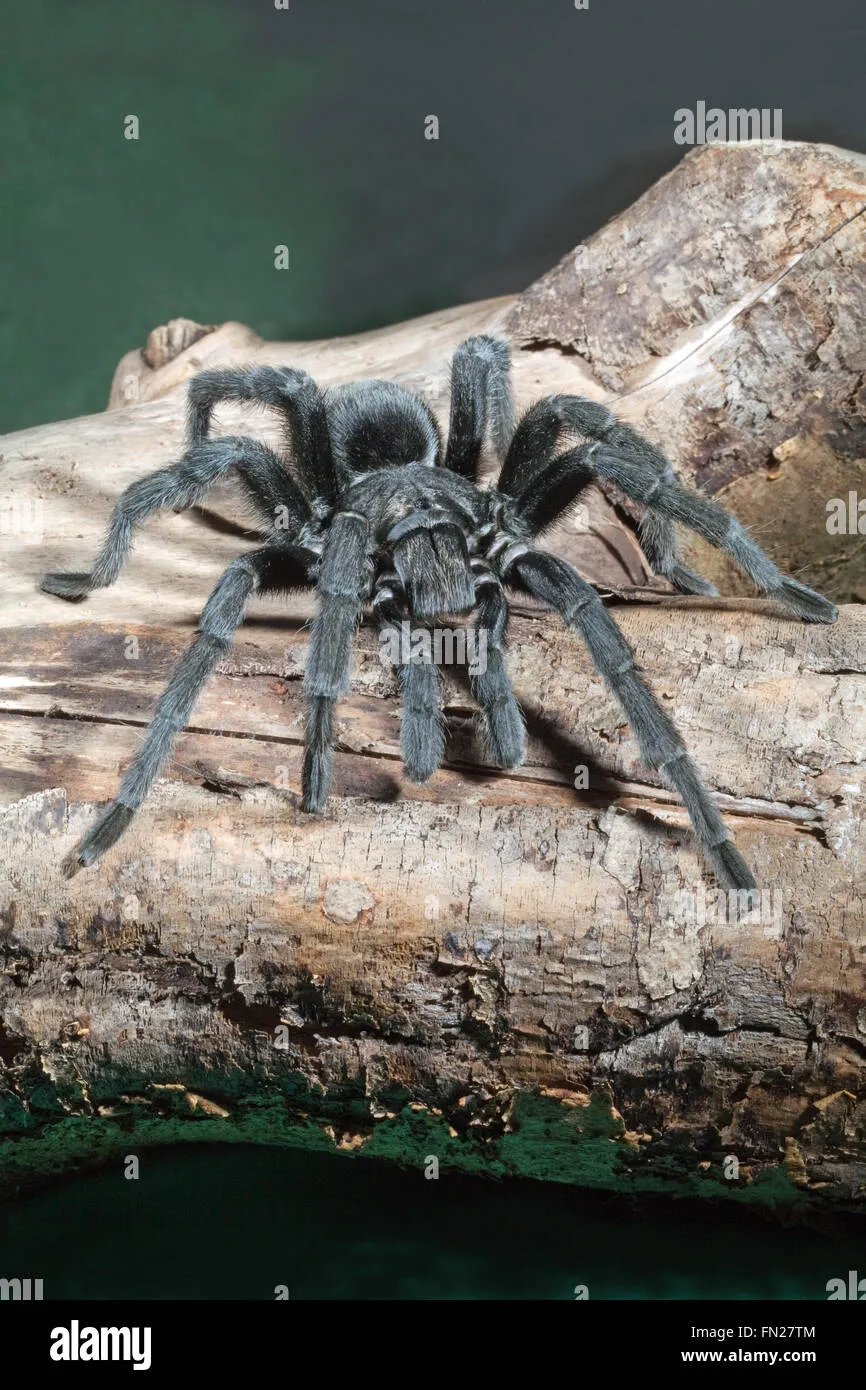
Appearance and Size
One of the most striking features of New World tarantulas is their impressive size and diverse coloration. Adults can range from a leg span of just a few inches to over 10 inches, depending on the species. They exhibit a wide array of colors, including shades of brown, black, orange, red, and even blue. Their bodies are covered in tiny hairs called setae, which play a role in sensory perception and defense. The chelicerae, or fangs, are prominent and used for capturing prey. Their overall appearance is a captivating display of nature’s artistry, which makes them highly sought after as pets. The specific characteristics of each species highlight the remarkable biodiversity within the tarantula family.
Behavior and Temperament
New World tarantulas are generally known for their relatively docile temperament compared to their Old World counterparts. However, behavior can vary significantly depending on the species and individual spider. Many are known to be more defensive than aggressive, often preferring to flee or flick urticating hairs (small, irritating hairs) as a defense mechanism. Some species are more prone to exhibiting defensive postures when threatened. Understanding the specific behavior of a tarantula is vital for safe handling and responsible pet ownership. Observing the spider’s movements, body language, and reactions can help determine its mood and level of comfort.
Top 7 Facts About New World Tarantulas
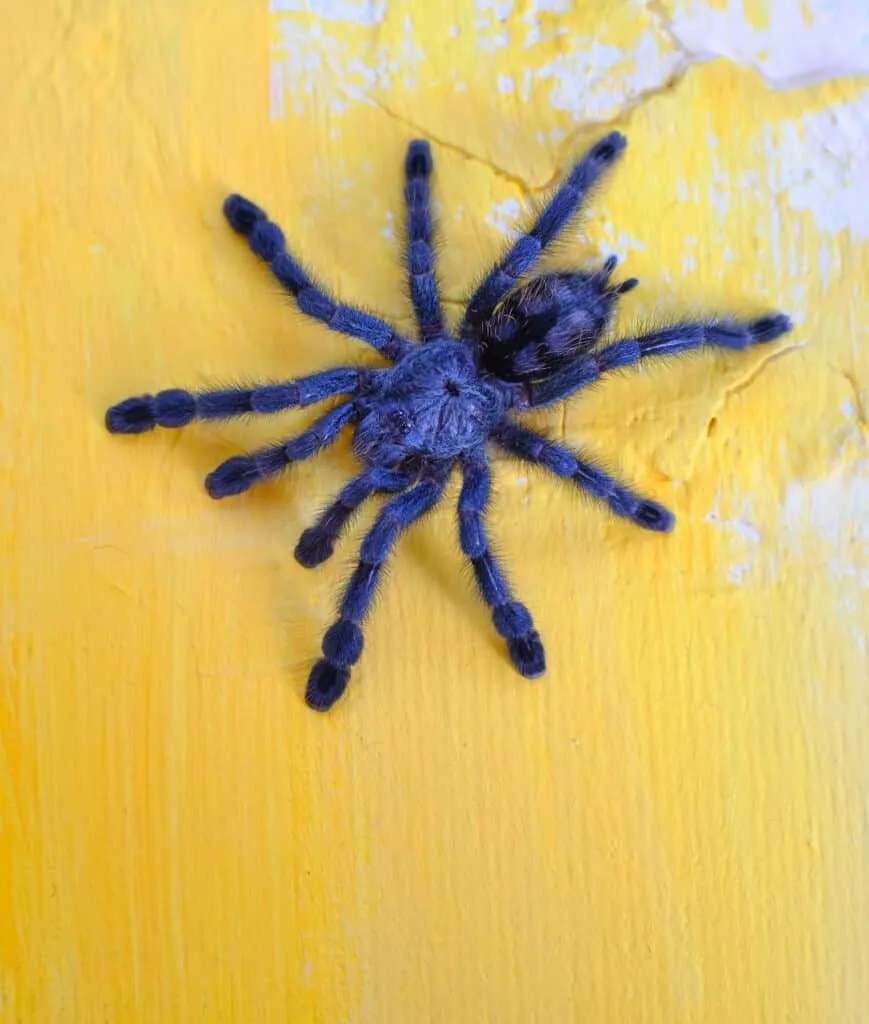
Fact 1: Venom Potency
While all tarantulas possess venom, the venom of New World species is generally considered to be of low potency to humans. The bite is often compared to a bee sting, causing localized pain, redness, and swelling. Severe reactions are rare. The venom’s primary function is to subdue prey, rather than pose a significant threat to larger animals. Understanding the level of venom potency in each tarantula species is important when handling the spider. Medical attention is usually not required after a bite but cleaning the wound and monitoring the affected area for any unusual symptoms is important.
Fact 2: Defensive Mechanisms
New World tarantulas employ several defensive mechanisms. The most common is the urticating hairs, which are small, barbed hairs on their abdomen. When threatened, they flick these hairs towards the perceived threat, causing skin irritation and itching. Some species also have a defensive posture, raising their front legs and fangs to appear larger and more intimidating. These defense mechanisms are used to deter predators and protect themselves from potential harm. When owning a tarantula, it’s crucial to avoid actions that might trigger defensive behavior.
Fact 3: Lifespan
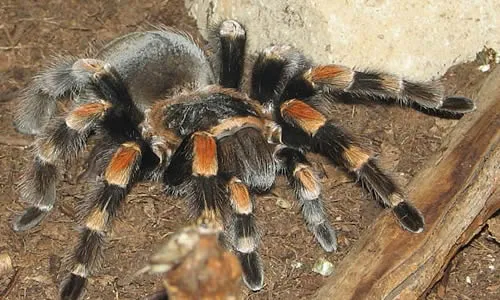
New World tarantulas have a relatively long lifespan compared to many other arachnids. Females, especially, can live for several years, with some species living for over 20 years in captivity. Males have shorter lifespans, typically surviving for a few years after reaching maturity. The longevity of these spiders makes them a long-term commitment for owners. Factors that influence a tarantula’s lifespan include genetics, diet, and the quality of care provided in captivity. This longevity makes them a rewarding pet, as owners can enjoy their presence for a considerable amount of time.
Fact 4: Diet and Feeding Habits
New World tarantulas are primarily insectivores, meaning their diet consists mainly of insects. In the wild, they feed on a variety of insects and small invertebrates. In captivity, they are typically fed crickets, mealworms, cockroaches, and other commercially available insects. The frequency of feeding depends on the spider’s age, size, and species, with younger spiders needing more frequent meals. It is vital to provide a varied diet to ensure the tarantula receives the necessary nutrients for healthy growth and development. Overfeeding can lead to health issues, while underfeeding might stunt growth.
Fact 5: Molting Process
Molting is a natural process in which tarantulas shed their exoskeleton to grow. This process allows them to increase in size and replace any damaged body parts. Before molting, the tarantula will typically become less active and may refuse to eat. The actual molting process can take several hours, during which the spider is very vulnerable. After molting, the tarantula’s new exoskeleton will be soft, and they will need time to harden before they can resume normal activities. Avoid disturbing the spider during molting, as it is a stressful time for the tarantula.
Fact 6: Common Species
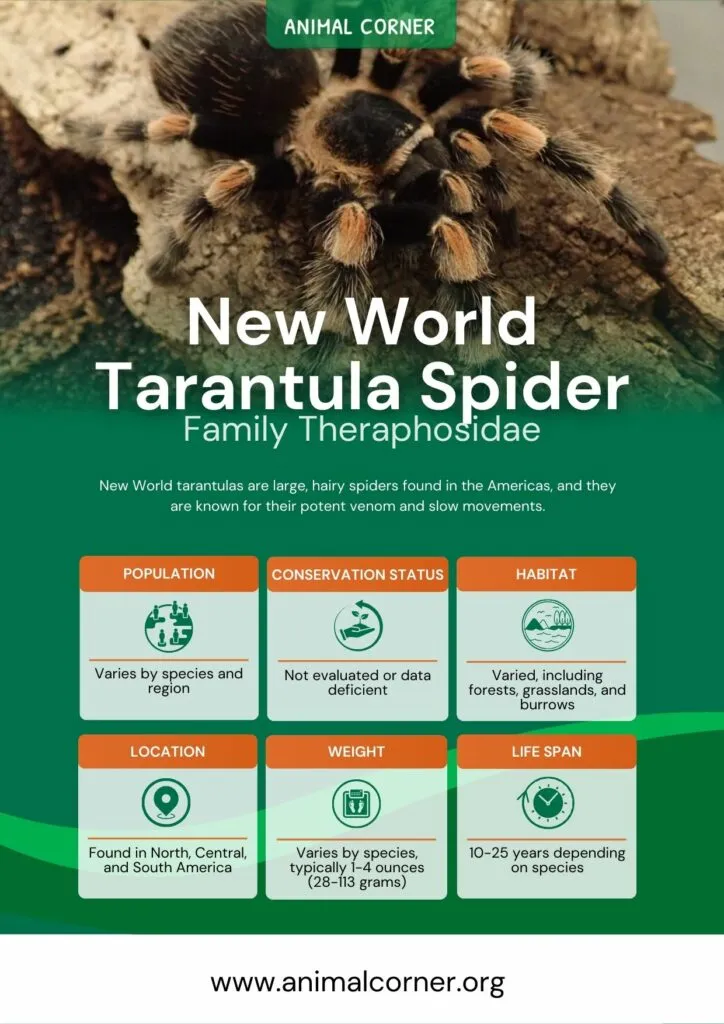
Several New World tarantula species are popular as pets. The most common species are the Mexican Red Knee (Brachypelma hamorii), the Chilean Rose Hair (Grammostola rosea), and the Pinktoe tarantulas (Avicularia species). These species are known for their docile temperament, beautiful coloration, and relatively easy care requirements. Each species has unique characteristics, including size, color, and behavior. Researching the specific requirements of each species is crucial before obtaining one to ensure it will thrive in captivity.
Fact 7: Popularity as Pets
New World tarantulas have gained popularity as pets due to their fascinating appearance, relatively low maintenance requirements, and manageable temperament. They appeal to a wide range of people, from experienced reptile and invertebrate keepers to those new to exotic pets. Their quiet nature and unique characteristics make them a good option for those who cannot keep other types of pets due to space limitations. The growing community of tarantula enthusiasts and breeders provides a wealth of information and support for new owners.
Caring for New World Tarantulas
Creating the Right Habitat
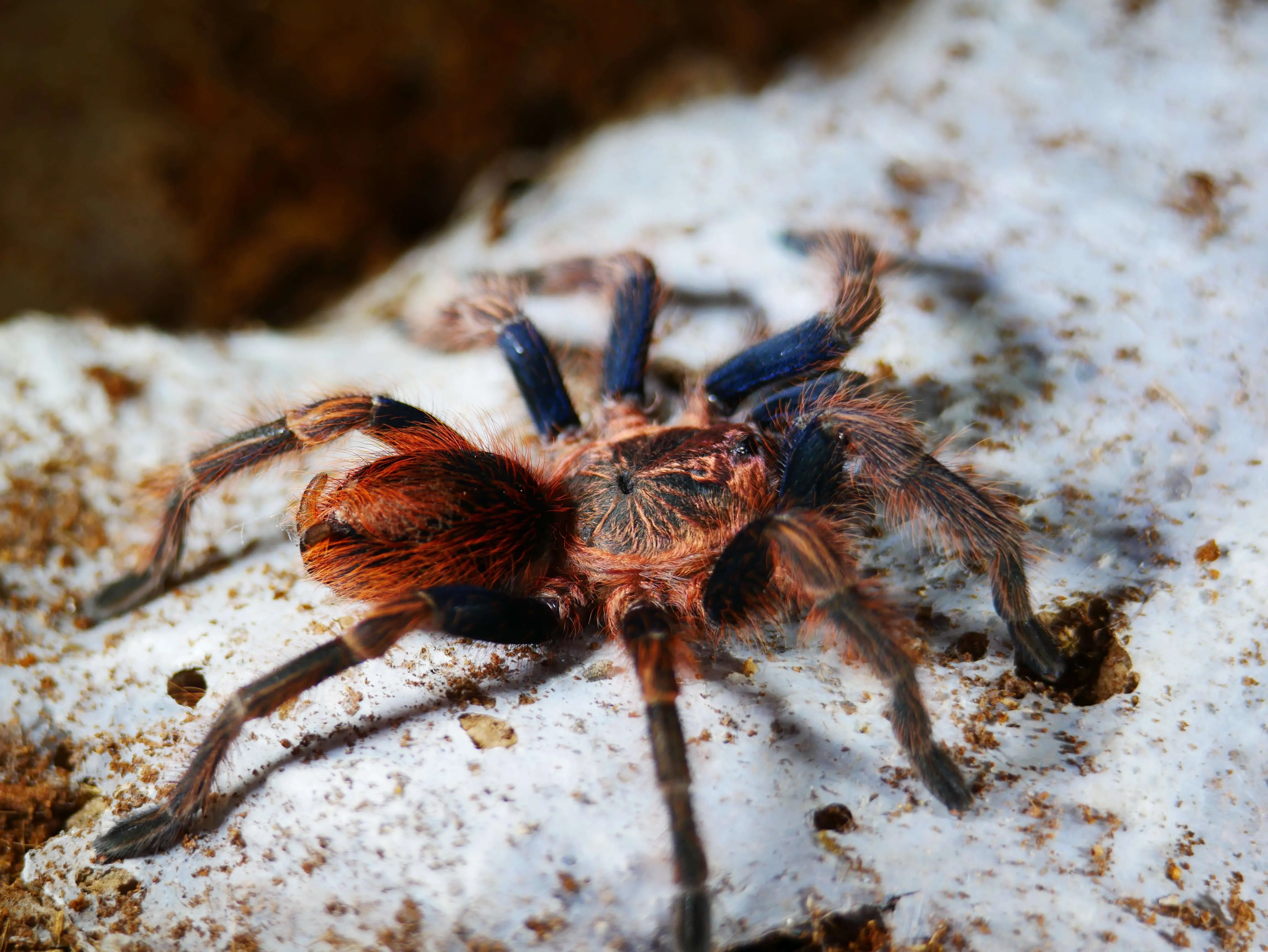
Temperature and Humidity
Maintaining the correct temperature and humidity levels is essential for the well-being of your New World tarantula. The ideal temperature range is generally between 75-85°F (24-29°C), but this can vary depending on the specific species. Humidity levels should be maintained to mimic the spider’s natural habitat. Use a hygrometer to monitor humidity and adjust as needed. Proper ventilation is also essential to prevent the growth of mold and fungus. Regularly mist the enclosure and ensure the spider has access to fresh water.
Substrate and Enclosure
The enclosure should be appropriate for the tarantula’s size and species, providing enough space for movement and burrowing if the species is terrestrial. A secure lid is essential to prevent escape. The substrate, which is the bedding material, should be chosen to help maintain humidity and provide a suitable environment for the spider. Good substrate options include coconut fiber, peat moss, and a mix of these materials. The substrate should be deep enough for the tarantula to burrow, and it should be replaced regularly to keep the enclosure clean and healthy. Provide hides, such as cork bark or artificial plants, for the spider to feel secure.
Feeding and Watering
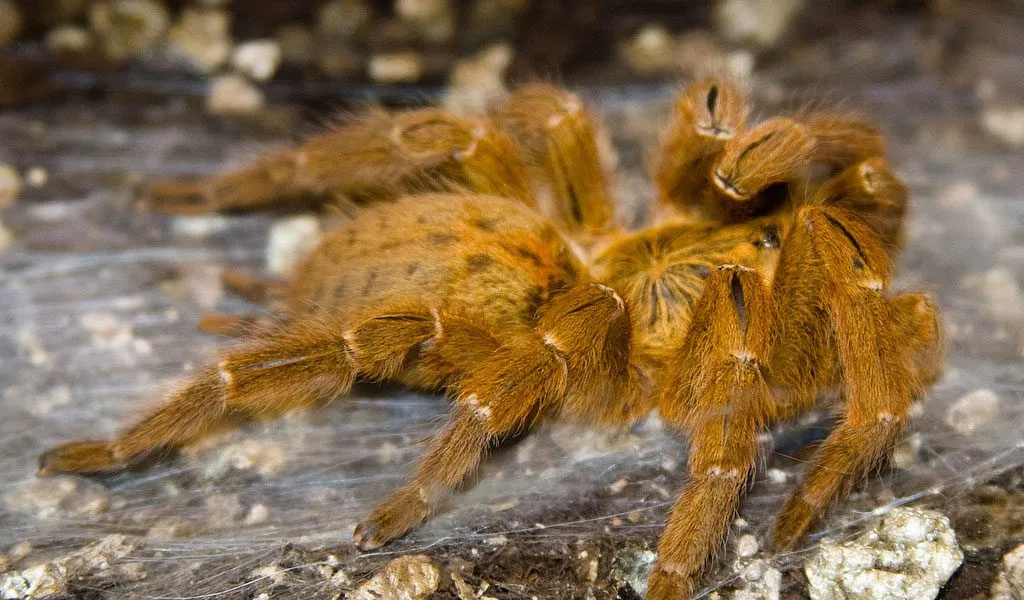
Provide a varied diet of insects appropriate to the spider’s size, feeding them 1-3 times a week, depending on the species, age, and growth. Crickets, mealworms, and cockroaches are common choices. Remove any uneaten food within 24 hours to prevent mold and mites. Provide a shallow water dish with fresh, clean water at all times. Ensure the dish is shallow to prevent the spider from drowning. Regular monitoring of the water dish is important for maintaining proper hygiene and preventing the spread of bacteria or mold.
Handling and Safety
Handling New World tarantulas should be kept to a minimum to avoid stress. When handling is necessary, do so gently and calmly. Wash your hands before and after handling the tarantula. Be aware of the spider’s defensive mechanisms, such as urticating hairs, and take precautions to minimize exposure. Always supervise children when they are near the tarantula’s enclosure. It is essential to be mindful of the spider’s behavior and avoid situations that could cause it to feel threatened or defensive.
Conclusion
New World tarantulas offer a unique and fascinating pet ownership experience. By understanding their origin, characteristics, and care requirements, owners can provide a safe and enriching environment. With proper care, these spiders can thrive and bring enjoyment for many years. The more information you gather and apply, the more fulfilling the ownership experience will be. Research and continuous learning are key to responsible tarantula ownership.
